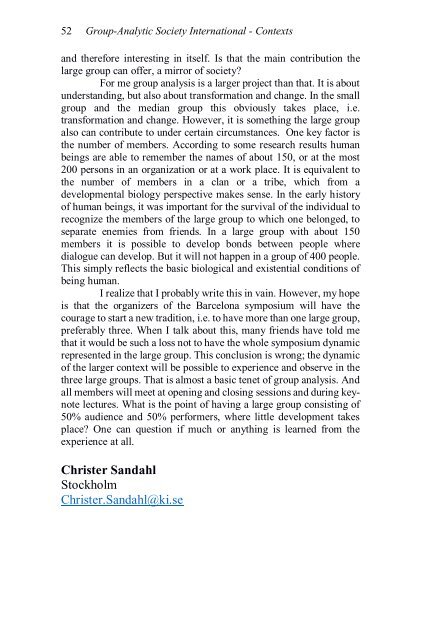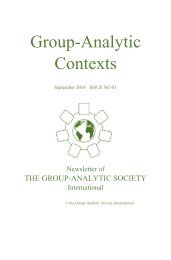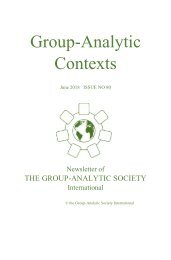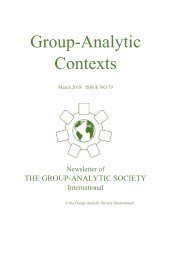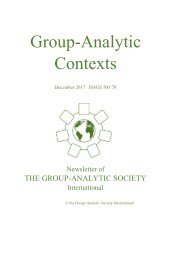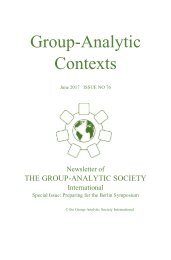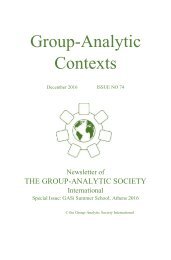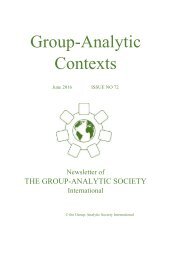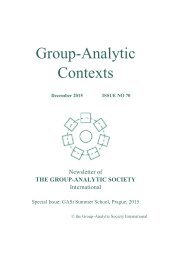Group Analytic Contexts, Issue 77, September 2017
Newsletter of the Group Analytic Society International
Newsletter of the Group Analytic Society International
Create successful ePaper yourself
Turn your PDF publications into a flip-book with our unique Google optimized e-Paper software.
52 <strong>Group</strong>-<strong>Analytic</strong> Society International - <strong>Contexts</strong><br />
and therefore interesting in itself. Is that the main contribution the<br />
large group can offer, a mirror of society?<br />
For me group analysis is a larger project than that. It is about<br />
understanding, but also about transformation and change. In the small<br />
group and the median group this obviously takes place, i.e.<br />
transformation and change. However, it is something the large group<br />
also can contribute to under certain circumstances. One key factor is<br />
the number of members. According to some research results human<br />
beings are able to remember the names of about 150, or at the most<br />
200 persons in an organization or at a work place. It is equivalent to<br />
the number of members in a clan or a tribe, which from a<br />
developmental biology perspective makes sense. In the early history<br />
of human beings, it was important for the survival of the individual to<br />
recognize the members of the large group to which one belonged, to<br />
separate enemies from friends. In a large group with about 150<br />
members it is possible to develop bonds between people where<br />
dialogue can develop. But it will not happen in a group of 400 people.<br />
This simply reflects the basic biological and existential conditions of<br />
being human.<br />
I realize that I probably write this in vain. However, my hope<br />
is that the organizers of the Barcelona symposium will have the<br />
courage to start a new tradition, i.e. to have more than one large group,<br />
preferably three. When I talk about this, many friends have told me<br />
that it would be such a loss not to have the whole symposium dynamic<br />
represented in the large group. This conclusion is wrong; the dynamic<br />
of the larger context will be possible to experience and observe in the<br />
three large groups. That is almost a basic tenet of group analysis. And<br />
all members will meet at opening and closing sessions and during keynote<br />
lectures. What is the point of having a large group consisting of<br />
50% audience and 50% performers, where little development takes<br />
place? One can question if much or anything is learned from the<br />
experience at all.<br />
Christer Sandahl<br />
Stockholm<br />
Christer.Sandahl@ki.se


